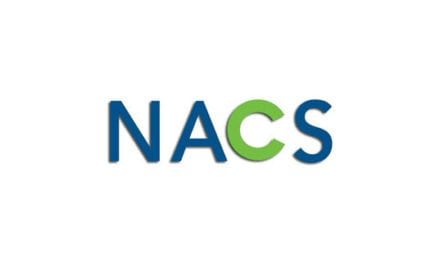By Brian Reynolds
They say you can’t teach an old dog new tricks! Maybe so, but teaching an old dog a new trick might be easier than teaching everyone in the organization how to operate a new system. Old habits are hard to break and automation is supposed to make work processes easier, more efficient and faster. But stopping the presses and learning new tricks can be very difficult.
It helps if everybody knows up front what the true challenges are after a decision has been made to implement new software. Before a purchase is made, the business operator should be seriously reviewing these common challenges:
- Length of time
- How to conduct business as usual while learning and moving to a new system
- Training
- Setting up the new system
- Support during and after the implementation
- Return on investment (ROI)
 Length of time — Everybody wants to see their new software applications get installed. But it is very easy to set overly optimistic goals for going live. That is especially the case if the new product must be installed in multiple locations. Human resources are always going to be the most valuable commodity, from the vendor to the client. Making sure that timelines have been level set and adhered to are crucial for success, and not sticking to a schedule is almost always the point of failure.
Length of time — Everybody wants to see their new software applications get installed. But it is very easy to set overly optimistic goals for going live. That is especially the case if the new product must be installed in multiple locations. Human resources are always going to be the most valuable commodity, from the vendor to the client. Making sure that timelines have been level set and adhered to are crucial for success, and not sticking to a schedule is almost always the point of failure.
 How to conduct business as usual while learning and moving to a new system — If you’re going to be successful with a new software solution, somebody must be the boss! Trying to work around people and processes is difficult, but somebody has to make decisions of when to flip the switch! It’s not fun making changes, even when the end result will be a better quality of life. Taking baby steps may be the best way to proceed, but even with baby steps someone needs to be there to hold your hand. If something can go wrong, it will, so having a good plan to keep moving forward while working out the kinks is extremely important. Lack of resources and unwillingness from the employees often leads to disaster. So, making sure a good and steady plan is adhered to is crucial for success.
How to conduct business as usual while learning and moving to a new system — If you’re going to be successful with a new software solution, somebody must be the boss! Trying to work around people and processes is difficult, but somebody has to make decisions of when to flip the switch! It’s not fun making changes, even when the end result will be a better quality of life. Taking baby steps may be the best way to proceed, but even with baby steps someone needs to be there to hold your hand. If something can go wrong, it will, so having a good plan to keep moving forward while working out the kinks is extremely important. Lack of resources and unwillingness from the employees often leads to disaster. So, making sure a good and steady plan is adhered to is crucial for success.
 Training — Poor training is worse than no training. Nothing is worse than talking to a brick wall that just wants you to leave. Knowing up front what success looks like will make training easier. Lack of training or an unwillingness to be trained is a great way to fail. If clear goals and time lines are not laid out from the beginning, the implementation process can become pure chaos. It is also very important to establish a “go-to” trainer. Somebody that can be a friend and a coach where a good trusting relationship can be had.
Training — Poor training is worse than no training. Nothing is worse than talking to a brick wall that just wants you to leave. Knowing up front what success looks like will make training easier. Lack of training or an unwillingness to be trained is a great way to fail. If clear goals and time lines are not laid out from the beginning, the implementation process can become pure chaos. It is also very important to establish a “go-to” trainer. Somebody that can be a friend and a coach where a good trusting relationship can be had.
 Setting up the new system — If I had a dollar for every time somebody asked about how hard is it to set up the new system, I would have a lot of dollars. Everybody knows this is the hard part. No matter how good a system is, it must be set up correctly. Which means lots of data entering and making sure it is done correctly. Today business systems are pushing the 30-year mark; some older systems may not have the ability to easily export files for things such as site profiles. The most time-consuming part of software implementation is data migration from the old to the new system. Regrettably, it is something you must do, and it is an important part of the process for staying on track. Focusing on doing this part right can also be a big part of the training.
Setting up the new system — If I had a dollar for every time somebody asked about how hard is it to set up the new system, I would have a lot of dollars. Everybody knows this is the hard part. No matter how good a system is, it must be set up correctly. Which means lots of data entering and making sure it is done correctly. Today business systems are pushing the 30-year mark; some older systems may not have the ability to easily export files for things such as site profiles. The most time-consuming part of software implementation is data migration from the old to the new system. Regrettably, it is something you must do, and it is an important part of the process for staying on track. Focusing on doing this part right can also be a big part of the training.
 Support during and after the implementation — This is where due diligence and probably a visit to where the support will be conducted will pay off. Go check out the home office and see for yourself. Talk to the help desk people. If the help desk is in the back of a nail salon, it’s probably not a good idea to expect much help after the sale. Support is vital. Find out how quickly a webinar can be put together. Find out how long the support team has been working with the product. Find out from other users how good support is.
Support during and after the implementation — This is where due diligence and probably a visit to where the support will be conducted will pay off. Go check out the home office and see for yourself. Talk to the help desk people. If the help desk is in the back of a nail salon, it’s probably not a good idea to expect much help after the sale. Support is vital. Find out how quickly a webinar can be put together. Find out how long the support team has been working with the product. Find out from other users how good support is.
 ROI — Realizing the real return on investment following software implementation takes time, but a good rule of thumb is 12 to 18 months. Less than 12 is a great ROI, be it in the form of reduced overhead to improved efficiencies to reducing shrink, all the way to the old-fashioned making more money. Like any aspect of a technology investment decision, you want buy-in from leadership and all end users. End users will help you check your assumptions about the real costs and benefits. Initiating and leading an ROI analysis is best led by a leader who is capable of thinking strategically about technology and the profitability of the business. ROI is not the law. Sometimes you won’t be able to show positive ROI with numbers, yet there is still a strong business case for your investment. Do your homework and you will be able to make a deliberate, well-informed decision.
ROI — Realizing the real return on investment following software implementation takes time, but a good rule of thumb is 12 to 18 months. Less than 12 is a great ROI, be it in the form of reduced overhead to improved efficiencies to reducing shrink, all the way to the old-fashioned making more money. Like any aspect of a technology investment decision, you want buy-in from leadership and all end users. End users will help you check your assumptions about the real costs and benefits. Initiating and leading an ROI analysis is best led by a leader who is capable of thinking strategically about technology and the profitability of the business. ROI is not the law. Sometimes you won’t be able to show positive ROI with numbers, yet there is still a strong business case for your investment. Do your homework and you will be able to make a deliberate, well-informed decision.
When it comes to implementing new software for a business with well-established processes, it’s not about teaching an old dog a new trick, but instead, tricking old dogs to accept being taught new ways for being more productive and profitable.
 Brian Reynolds began his career working as a teenager in his family-owned jobbership in Cisco, Texas and was at the forefront of many significant industry milestones. Reynolds was an early adopter of cardlock systems in the 1980s, a pioneer of high-volume supermarket fueling centers in the 1990s and one of the key architects of inventing reward-based fueling loyalty in the 2000s. He currently works for Dover Fueling Solutions in ClearView, wet stock management sales.
Brian Reynolds began his career working as a teenager in his family-owned jobbership in Cisco, Texas and was at the forefront of many significant industry milestones. Reynolds was an early adopter of cardlock systems in the 1980s, a pioneer of high-volume supermarket fueling centers in the 1990s and one of the key architects of inventing reward-based fueling loyalty in the 2000s. He currently works for Dover Fueling Solutions in ClearView, wet stock management sales.









